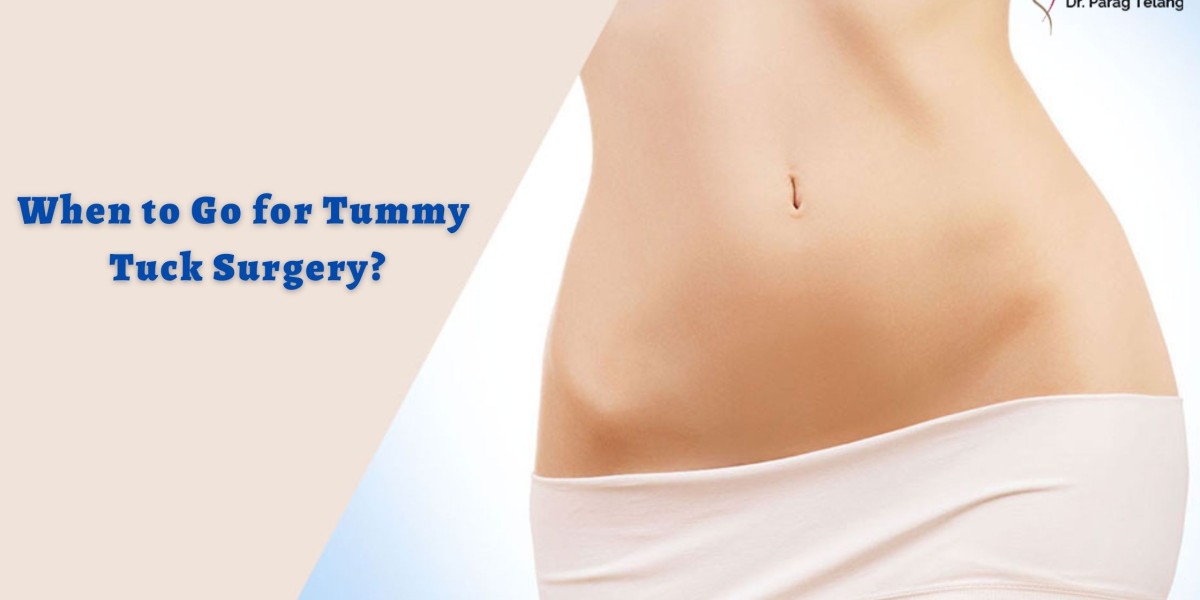Tummy tuck procedures are quite popular among women, particularly women who have had children, but an increasing number of men are now interested in them.
If one is living in Dubai and wants to undergo Abdominoplasty in Dubai, one can get it done with the expert plastic surgeon Dr. Parag Telang. He performs all types of tummy tuck surgeries and helps people get a toned and curvier or shapelier abdominal shape.
Why do you want a tummy tuck?
Many people devote numerous hours to the gym or staying active to achieve a flat, toned abdomen. Even the most rigorous diet and exercise regimens can fall short of this goal. Even the most physically active adults with average body weight might acquire a bulging abdomen. Several most common reasons for this are as follows:
- Weight fluctuations
- Age
- Genetics
- Previous medical procedures
- Skin elasticity loss during pregnancy.
Procedure for Abdominoplasty (Tummy Tuck)
After a tummy tuck treatment, the results are considered permanent. While the effects are long-lasting, substantial weight changes can have a negative impact. For moms, having further pregnancies after the treatment can alter the benefits of a tummy tuck procedure by straining the newly tightened, healing muscles. A lady should put off undergoing a tummy tuck if she thinks about having more children.
A tummy tuck procedure works effectively with liposuction to treat such fatty deposits that diet and exercise cannot tackle. A tummy tuck, on the other hand, will not affect or remove abdominal scars such as stretch marks. Although there may be some improvement in areas where extra skin has been removed, these areas are mainly below the navel.
Step 1: Anaesthesia
During abdominoplasty surgery, medications are given to the patient for their comfort. It is usually done under general anesthesia. Plastic surgeons collaborate with anesthesiologists to create an individualized treatment plan for each patient to enhance safety, comfort, and results—infiltration of local anesthesia to reduce blood loss and post-operative pain.
Step 2: The incision
A horizontal incision is created between the pubic hairline and the navel area. The degree of correction required will influence the shape and length of the incision. This incision repairs and stitches weaker abdominal muscles while removing extra fat, tissue, and skin. A second incision may be required to remove excess skin in the upper abdomen around the navel.
Step 3: Reconstruction of the abdomen
A substantial amount of skin (including stretch marks) and fat are eliminated from the lower abdomen, and the rectus abdominis muscles are tightened. After that, the upper abdominal skin is redistributed throughout the abdomen, and a new belly button is formed within the tighter abdominal skin. When necessary, the pubic area is tightened.
Step 4: Finishing the incisions
Sutures, skin adhesives, tapes, and clips close the skin incisions. Plastic surgeons use precise anchoring and suturing techniques to achieve optimal scar results.
Types of Tummy Tuck Surgical Procedures:
Mini Tummy Tuck
A mini-tummy tuck is a less invasive treatment that improves the contour of the abdomen only below the belly button. It is recommended for individuals with minor skin and fat excesses in the lower abdomen and unsightly scars from previous surgery (such as a C-section).
A mini-tummy tuck can be done with liposuction to eliminate concentrated fat and tighten the muscles below the belly button. This procedure is advised for people who are physically well, have no abdominal issues, and have belly fat behind their belly button that neither exercise nor diet regimes are helping them get rid of.
Standard (Full) Tummy Tuck
Standard tummy tucks pull the abdominal skin so far lower than the belly button must be repositioned to remain centrally situated. It produces a circular scar around the belly button and significantly improves abdominal contour. For most people, a standard tummy tuck is the best option.
It may be able to "float" the belly button for patients who require less skin excision. The belly button will remain connected to the skin and be drawn downward. The belly button, on the other hand, is not shifted far enough to necessitate a circular incision for relocation. This method can also strengthen the upper and lower abdomen muscles. Floating the belly button can dramatically improve abdominal contour, although the effects are not as dramatic as a typical tummy tuck.
To know more about this surgery do consult Dr. Parag Telang to know more about Tummy Tuck Plastic Surgery in Abu Dhabi.
Recovery after Tummy Tuck Surgery
- Patients will be given specific instructions to help them recover from tummy tuck surgery, including how to take care of the surgical area and drains, medicines to apply or take orally to promote healing and reduce the risk of infection, specific concerns to look out for at the surgical site or in general health, and when to follow up with the plastic surgeon.
- Patients should plan to rest for one week following their tummy tuck treatment. For several weeks, an elastic compression garment will be worn under clothing. Patients with non-physical labor jobs can return to work one to two weeks after surgery. Regular exercise routines and lifting weights can usually be resumed six weeks after surgery.
- The abdominal skin and muscles will be tighter, and the patient is asked to keep the incision as relaxed as possible. It can be accomplished by briefly flexing the hips in bed and slouching while standing. Over the first week, the skin will progressively relax, allowing the patient to stand upright again. Many patients feel strong enough to resume work immediately; doctors advise patients to avoid unnecessary movements for the first few weeks after surgery. Exercising vigorously should be avoided for six weeks after surgery.
- Most sutures used to close incisions are absorbable and do not need removal. In the months following surgery, the new incision is usually slightly red. The incision often fades to a paler color as healing occurs and the scar advances. Scar improvement might be predicted for up to two years after surgery, and the incision is placed so that it is low enough to be camouflaged by a bathing suit.
Benefits of Tummy Tuck Surgery
A tummy tuck is typically performed on patients with excess skin or relatively small fat accumulation throughout the abdomen. A tummy tuck can also repair and tighten strained abdominal muscles, which causes the belly to protrude more than usual. No amount of diet or exercise can return these injured muscles to their initial state. As a result, a tummy tuck might be especially beneficial for mothers who want to reclaim their pre-pregnancy shape. A tummy tuck is one of the more common choices for women who wish to have a complete mommy makeover.
Following are some of the procedure's primary benefits:
- Excessive loose or superfluous abdominal skin is removed
- Residual skin tightening for a flatter appearance
- Constriction of the abdominal musculature and fascia
- A slimmer waistline
- Better garment fit
- Overall, self-confidence and self-esteem have improved.
If one wants to transform their look with a Tummy tuck or Abdominoplasty in Dubai, they can consult the expert, Dr. Parag Telang, he is an expert body contouring surgeon and has helped many people to look their best with the best surgical procedures!








